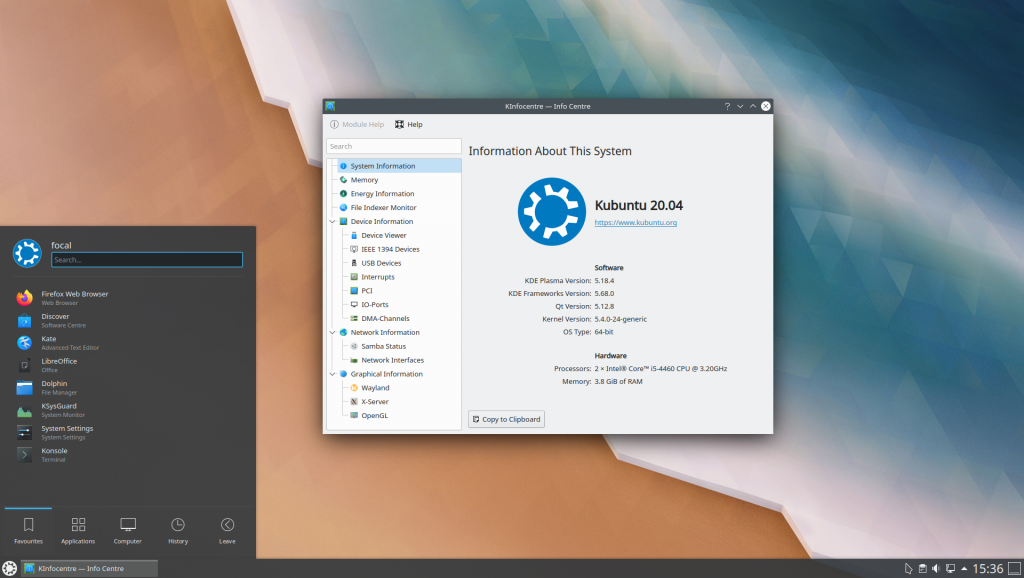What is Kubuntu?
Kubuntu is a Linux distribution that uses KDE as its desktop environment. It is an operating system developed by Canonical Ltd. and its contributors. It is an official derivative of Ubuntu and its name comes from the KDE + Ubuntu pun. Every package in Kubuntu shares the same Ubuntu repositories.
It is possible to download it over the Internet at no cost or request the CD on its official website through a service called ShipIt, through which the order is sent to your home anywhere in the world completely free of charge and within an approximate period of between six and ten weeks.
Kubuntu is an open source operating system built on the Linux kernel. The Kubuntu community is formed based on the ideals enshrined in the Ubuntu Philosophy, that is: that software should be available for free, that software tools should be usable by people in their local language and without limits imposed by their disabilities, and that people should be free to customize or alter their software in any way they see fit. Thus:
▸Kubuntu will always be free, and there is no extra fee for the “business edition”; We put our best work available to everyone on the same terms of Gratuity.
▸Kubuntu includes the best of the best in translation and accessibility that the Free Software community has to offer, so that Kubuntu is usable by as many people as possible.
▸Kubuntu is released regularly and predictably; a new version appears every six months. You can use the current stable version or try the version that is in development. Each edition has a customer service for at least 18 months.
▸Kubuntu is completely subject to the principles of open source software development; Kubuntu encourages people to use open source software, improve it, and redistribute it.
Features

It has a large collection of practical and simple applications for configuring the entire system, through a useful graphical interface for users starting with Linux. The official desktop environment is KDE and they are synchronized with its releases. There are packages with GNOME and other desktop environments, which can be added once the official Kubuntu is installed with KDE. The official web browser is rekonq.
The system includes advanced security functions and its policies include not activating, by default, latent processes at the time of installation. For this reason, there is no default firewall, since there are no services that can threaten the security of the system.
For administrative tasks / tasks in terminal it includes a tool called sudo (similar to Mac OS X), with which the use of the root user is avoided.
The minimum “recommended” requirements (including desktop effects) should allow you to run a Kubuntu installation, although in general, you can run Kubuntu on older hardware than specified, although performance will be lower:
▸Processor: 1 GHz x86.
▸RAM: 512 MiB.
▸Hard Drive: 5 GB (for a full installation with swap included).
▸VGA graphics card and monitor capable of supporting a resolution of 1024×768.
▸CD-ROM or network card reader.
▸Sound card.
▸Internet connection.
If you have a computer with a 64-bit processor (x86-64), and especially if you have more than 3 GB of RAM, it is recommended to use the version of Kubuntu for 64-bit systems.




[…] Linux Mint, what you should know about it Kubuntu, distribution of Linux […]